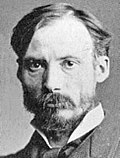Файл:La Grenouillère (Auguste Renoir) - Nationalmuseum - 19486.tif

Размер этого JPG-превью для исходного TIF-файла: 744 × 600 пкс. Другие разрешения: 298 × 240 пкс | 595 × 480 пкс | 952 × 768 пкс | 1270 × 1024 пкс | 2540 × 2048 пкс | 3234 × 2608 пкс.
Исходный файл (3234 × 2608 пкс, размер файла: 24,16 Мб, MIME-тип: image/tiff)
История файла
Нажмите на дату/время, чтобы посмотреть файл, который был загружен в тот момент.
| Дата/время | Миниатюра | Размеры | Участник | Примечание | |
|---|---|---|---|---|---|
| текущий | 11:03, 8 октября 2016 |  | 3234 × 2608 (24,16 Мб) | AndreCostaWMSE-bot | {{Artwork |other_fields_1 = |artist = {{Creator:Pierre-Auguste Renoir}} |title = {{en|La Grenouillère}} {{sv|La Grenouillère}} |wikidata = Q10908882 |object_type = painting |description... |
| 11:03, 8 октября 2016 |  | 3234 × 2608 (24,16 Мб) | AndreCostaWMSE-bot | {{Artwork |other_fields_1 = |artist = {{Creator:Pierre-Auguste Renoir}} |title = {{en|La Grenouillère}} {{sv|La Grenouillère}} |wikidata = Q10908882 |object_type = painting |description... |
Использование файла
Следующая страница использует этот файл:
Глобальное использование файла
Данный файл используется в следующих вики:
- Использование в ar.wikipedia.org
- Использование в en.wikipedia.org
- Использование в en.wikiquote.org
- Использование в es.wikipedia.org
- Использование в fr.wikipedia.org
- Использование в hy.wikipedia.org
- Использование в hyw.wikipedia.org
- Использование в ja.wikipedia.org
- Использование в sv.wikipedia.org
- Использование в tr.wikipedia.org
- Использование в uk.wikipedia.org
- Использование в www.wikidata.org
- Q10908882
- Wikidata:WikiProject sum of all paintings/Creator/Pierre-Auguste Renoir
- Wikidata:WikiProject sum of all paintings/Subject/Paris
- User:Kringln/Sitelink report
- Wikidata:WikiProject sum of all paintings/Old European art missing genre/Sweden
- Wikidata:WikiProject sum of all paintings/Collection/Nationalmuseum/19th Century





